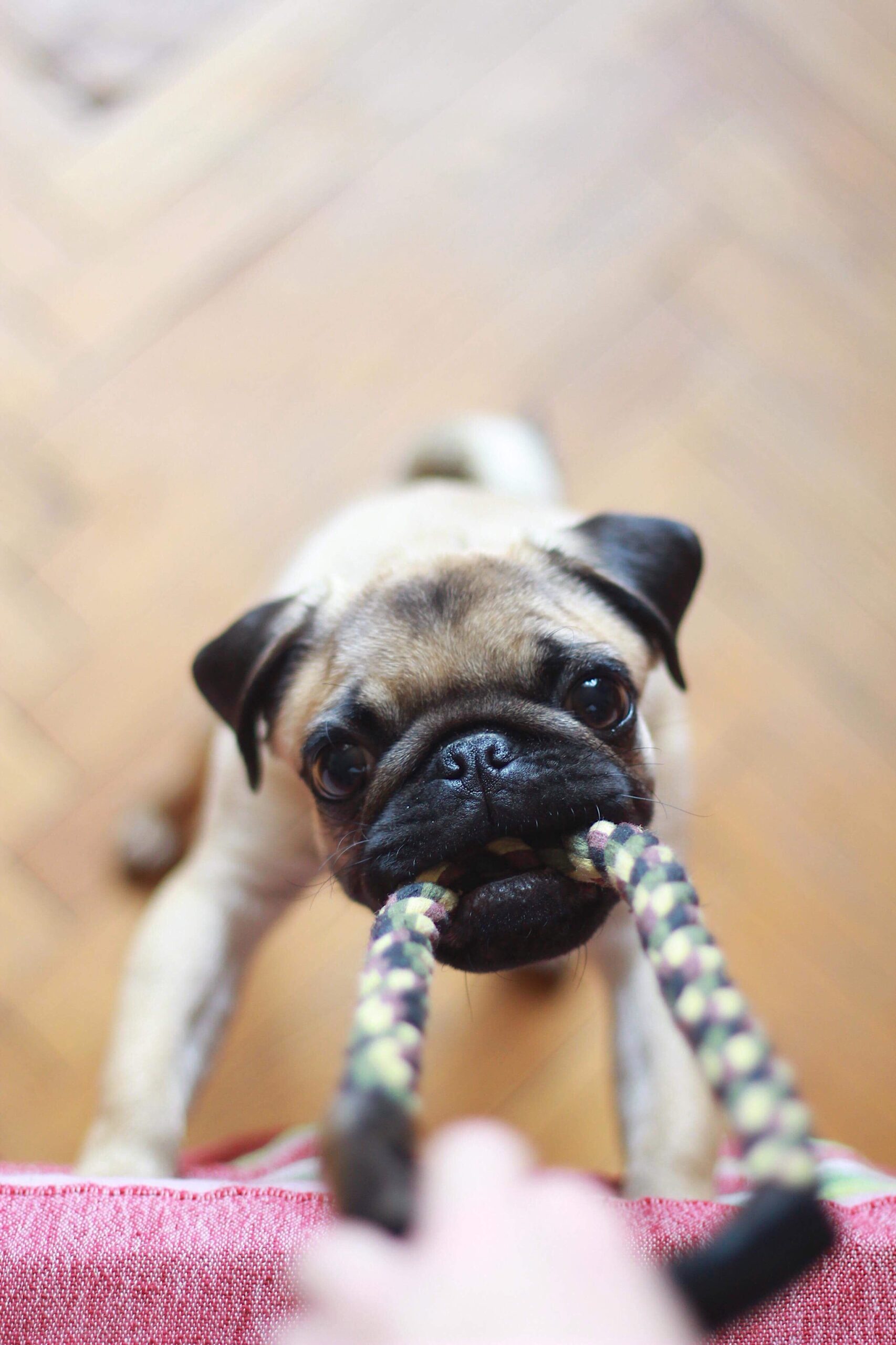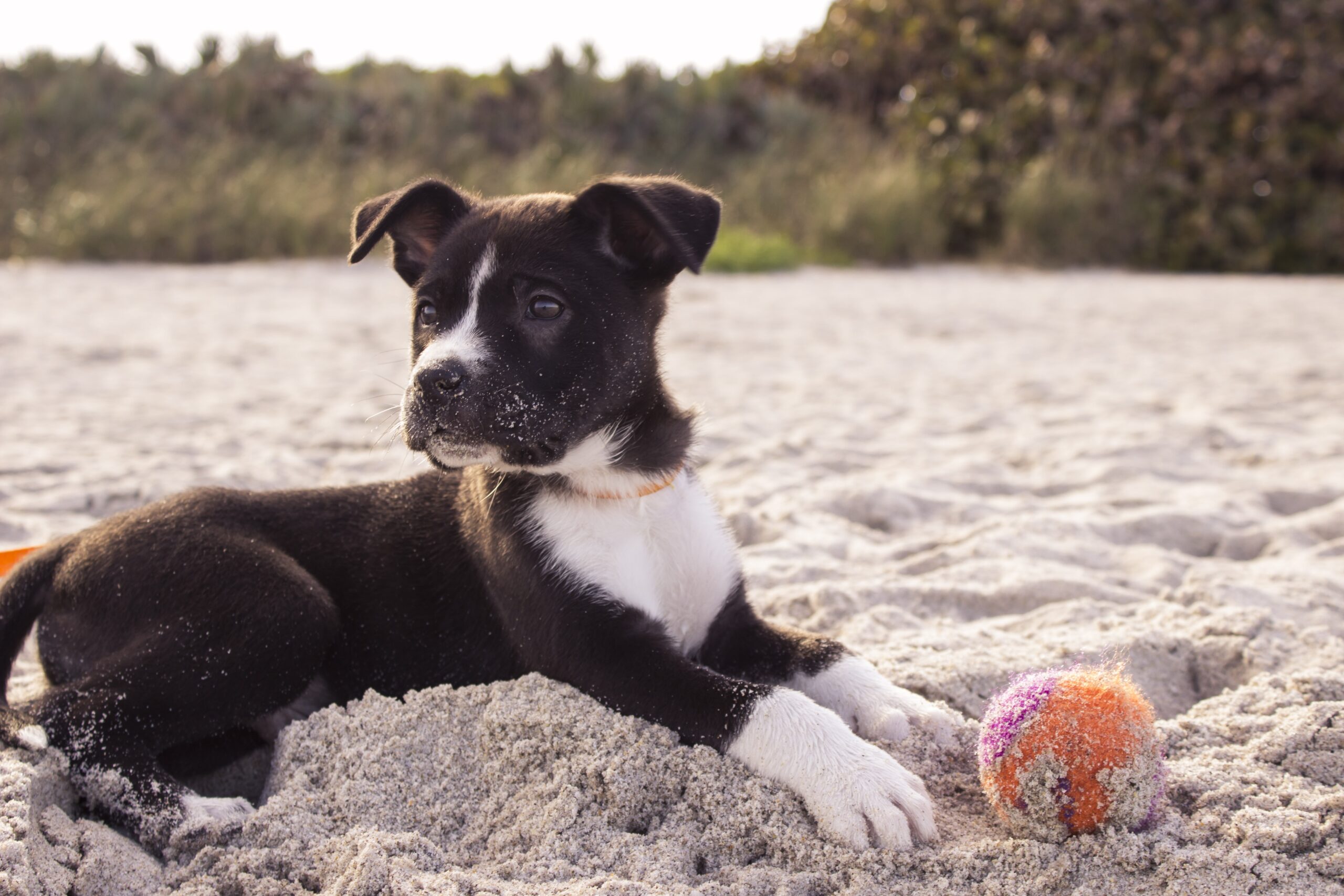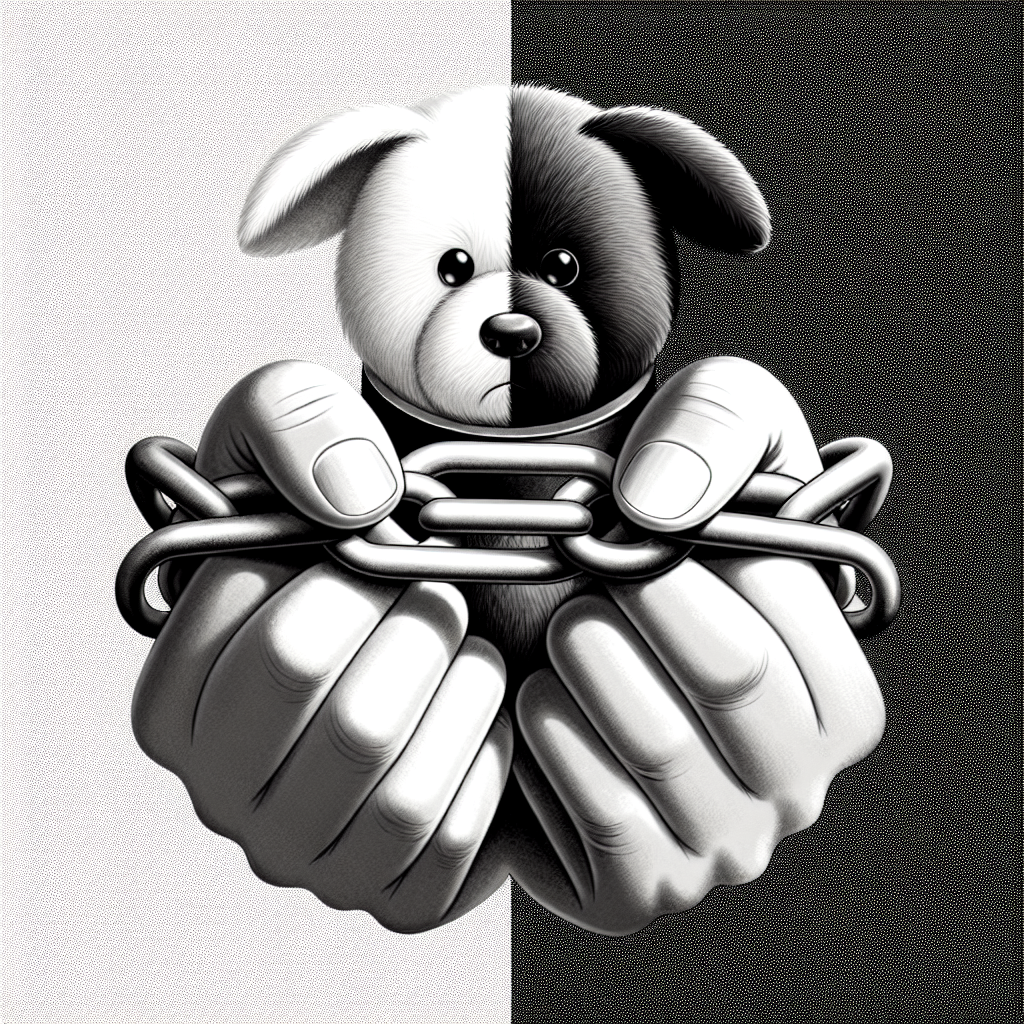If you find yourself in the challenging situation of dealing with a dog that has aggressive tendencies, your first instinct may be to panic or feel overwhelmed. However, it is crucial to approach this issue with patience, understanding, and a friendly tone. By implementing positive training techniques, seeking professional help when necessary, and creating a safe and structured environment for your furry friend, you can transform their behavior and build a strong, trusting bond. Remember, with the right approach, even a dog with aggressive tendencies can become a loving and well-behaved companion.
Understanding the Causes of Aggressive Behavior
Aggressive behavior in dogs can stem from various factors, and it’s important to understand these causes in order to address the issue effectively. By identifying and addressing the root causes, you can help your dog overcome their aggressive tendencies and create a safe and harmonious environment for everyone involved.
Fear
Fear is a common cause of aggressive behavior in dogs. When a dog feels threatened, their natural response may be to act aggressively in order to protect themselves. It’s essential to identify the source of your dog’s fear and work towards addressing it. This may involve gradual exposure to the trigger under controlled conditions, along with positive reinforcement to build confidence and trust.
Protectiveness
Dogs are naturally protective of their loved ones, including their human family members. Sometimes, this protectiveness can manifest as aggressive behavior towards strangers or other animals that are perceived as a threat. To address this, it’s crucial to establish clear boundaries for your dog and provide consistent training to teach them appropriate ways to channel their protective instincts.
Territoriality
Dogs are territorial animals, and they may exhibit aggressive behavior when they feel their territory is being invaded. This can occur in your home, yard, or even during walks in unfamiliar areas. To manage territorial aggression, it’s important to establish yourself as the pack leader and teach your dog proper boundaries. Gradual exposure to unfamiliar environments and positive reinforcement for calm behavior can also help in reducing territorial aggression.
Frustration
Just like humans, dogs can also experience frustration, which may lead to aggressive behavior. Frustration can occur when a dog is unable to access or obtain something they desire, such as food, toys, or attention. To address this, it’s crucial to establish a clear and consistent routine for your dog, ensuring they have regular opportunities for exercise, mental stimulation, and social interaction. Teaching your dog impulse control through positive reinforcement training techniques can also be beneficial.
Lack of Socialization
Dogs that have not been adequately socialized may develop aggressive tendencies towards other dogs or unfamiliar people. Proper socialization from an early age is essential to help dogs feel comfortable and confident when encountering new situations. Gradual exposure to various environments, people, and animals, along with positive experiences, can help minimize the risk of aggressive behavior due to socialization issues.
Pain or Physical Discomfort
Underlying pain or physical discomfort can cause a dog to act aggressively as a means of self-preservation. If your dog displays sudden aggression or a change in behavior, it’s essential to consult with a veterinarian to rule out any potential health issues that may need to be addressed. Treating and managing pain or discomfort can significantly reduce aggressive tendencies in dogs.
Recognizing Aggressive Behaviors
It’s crucial to recognize and understand the signs of aggressive behaviors in dogs. By being aware of these cues, you can take appropriate action and prevent potentially dangerous situations. Here are some common aggressive behaviors to watch out for:
Growling
Growling is a vocalization commonly associated with aggression in dogs. It serves as a warning signal, indicating that the dog feels threatened or uncomfortable. If your dog growls, it’s important to assess the situation and address the underlying cause of their unease.
Barking
Barking can be a natural means of communication for dogs, but excessive or aggressive barking can be a sign of underlying aggression. Excessive barking can be triggered by fear, territoriality, or frustration. Understanding the cause of the barking and addressing it through proper training and management techniques is essential.
Biting
Biting is the most severe form of aggression in dogs, and it requires immediate attention. A dog that bites may cause harm to others or themselves. If your dog displays any signs of aggression towards biting, seeking professional help is crucial to ensure the safety of everyone involved.
Snapping
Snapping refers to the act of the dog quickly extending its jaws towards a person or another animal without making contact. This behavior serves as a warning sign and should not be ignored. It’s essential to address the underlying cause of the snapping behavior and implement appropriate training techniques to prevent escalation.
Showing Teeth
A dog showing its teeth is a clear indication of their aggressive intent. This behavior is often accompanied by other warning signs such as growling and tense body posture. If your dog displays this behavior, it’s important to address the trigger and seek professional guidance to prevent potential aggression.
Lunging
Lunging refers to a sudden forward movement of a dog towards a person or another animal with the intent to attack or intimidate. It’s essential to manage and address this behavior promptly to prevent potential harm. Identification of triggers, implementing safety measures, and professional assistance can help manage and modify this type of aggressive behavior.

Seeking Professional Help
Dealing with a dog that has aggressive tendencies can be challenging and may require professional assistance. Consulting with a veterinarian, finding a certified dog behaviorist, or working with a dog trainer can make a significant impact in addressing your dog’s aggression issues.
Consulting a Veterinarian
The first step in addressing your dog’s aggression is consulting with a veterinarian. They will be able to rule out any potential underlying medical conditions that may contribute to your dog’s aggressive behavior. They can also provide guidance on medication options, if necessary, to help manage any underlying anxiety or pain.
Finding a Certified Dog Behaviorist
A certified dog behaviorist specializes in the understanding and modification of dog behavior. They can conduct a thorough assessment of your dog’s aggression and develop a comprehensive behavior modification plan tailored to your specific situation. With their expertise and knowledge, they can help you address the root causes of your dog’s aggression and work towards positive behavioral changes.
Working with a Dog Trainer
A professional dog trainer can provide guidance and hands-on training to help manage and modify your dog’s aggressive behaviors. They can teach you effective training techniques and provide support throughout the process. A trainer can also assist in enhancing your dog’s obedience skills, impulse control, and appropriate-socialization, which can lead to a more well-behaved and less aggressive dog.
Implementing Safety Measures
When dealing with a dog with aggressive tendencies, it’s crucial to prioritize safety for both your dog and those around them. Implementing safety measures can help prevent potential incidents and provide a more secure environment.
Avoiding Triggers
Identifying and avoiding triggers that provoke your dog’s aggression is crucial. This may involve keeping your dog away from certain situations, people, or animals that elicit aggressive behavior. By managing their exposure to triggers, you can significantly reduce the likelihood of aggressive incidents.
Using a Muzzle
In some cases, using a muzzle can help manage your dog’s aggression when engaging in situations that may pose a risk. A properly fitted muzzle provides a temporary means of preventing bites and reduces the risk of harm. A muzzle should always be used in combination with positive reinforcement training techniques, as it should not be used as a long-term solution without addressing the underlying behavioral issues.
Providing a Safe Space
Creating a safe space for your dog is essential to prevent their aggression from escalating. This can be a designated area in your home where they can retreat when feeling overwhelmed or stressed. Ensure this space is comfortable, free from triggers, and provides your dog with a sense of security.

Training Techniques for Aggression
Implementing proper training techniques is crucial for managing and modifying aggressive behavior in dogs. By using positive reinforcement, desensitization, and specific behavior training methods, you can help your dog develop new, desirable behaviors and reduce their aggression.
Positive Reinforcement
Positive reinforcement involves rewarding your dog for displaying appropriate behaviors. By using treats, praise, and attention, you can reinforce the behaviors you want to see from your dog. This method encourages positive association and motivation for your dog to exhibit non-aggressive responses in various situations.
Desensitization and Counterconditioning
Desensitization and counterconditioning involve exposing your dog to their triggers gradually and at a distance in a controlled environment. By pairing the trigger with positive experiences, such as treats or play, you can help your dog develop a positive association with the trigger and reduce their aggressive response over time.
Behavior Adjustment Training
Behavior adjustment training (BAT) focuses on teaching dogs alternative behaviors to aggressive responses. It involves allowing your dog to approach a trigger under controlled conditions and rewarding them for displaying calm and non-aggressive behavior. BAT is a gradual process that helps dogs learn to make better choices in challenging situations.
Clicker Training
Clicker training is a form of positive reinforcement training that utilizes a clicker as a marker for desired behavior. By pairing the sound of the clicker with a reward, such as a treat, your dog learns to associate the click with positive experiences. Clicker training can be an effective tool for managing and modifying aggressive behaviors by rewarding calm and non-aggressive responses.
Proper Exercise and Mental Stimulation
Providing your dog with proper exercise and mental stimulation is essential for their overall well-being, as well as for managing and reducing aggression.
Physical Exercise
Regular physical exercise helps relieve pent-up energy and provides an outlet for your dog’s natural instincts. Engaging in activities such as walking, jogging, playing fetch, or participating in agility training can help burn off excess energy, resulting in a calmer and more relaxed dog.
Mental Stimulation
Mental stimulation is equally important for dogs. Engaging their minds through activities like puzzle toys, scent work, obedience training, or trick training can help tire them mentally and prevent boredom-induced aggression. Mental stimulation exercises your dog’s brain, promotes problem-solving skills, and reinforces positive behaviors.

Avoiding Punishment-Based Training
When dealing with aggression in dogs, it’s crucial to avoid punishment-based training methods. Punishment-based training can increase fear and anxiety in dogs, potentially exacerbating aggressive behaviors.
Understanding the Consequences
Punishment-based training techniques such as physical force, shouting, or shock collars can have detrimental effects on a dog’s mental and emotional well-being. Dogs subjected to punishment may become fearful, defensive, or more prone to aggression. Understanding the potential consequences of punishment-based training is essential to provide your dog with a positive and nurturing learning environment.
Creating Trust and Bonding
Instead of punishing your dog for their aggressive behavior, it’s important to focus on building trust and strengthening your bond with them. Positive reinforcement, patience, and consistency can help create a trusting and secure relationship with your dog. By rewarding good behavior and addressing triggers through training and management techniques, you can help your dog feel safe and confident, reducing the likelihood of aggressive incidents.
Socializing Your Dog
Proper socialization is crucial for dogs to develop appropriate behavior and non-aggressive responses towards other dogs and people.
Gradual Exposure
Start socializing your dog at an early age by gradually exposing them to different environments, people, and animals. Introduce them to new experiences and individuals in a controlled and positive manner. Slowly increase the level of exposure over time, ensuring your dog remains comfortable and relaxed throughout the process.
Positive Experiences
Make socialization a positive experience for your dog by rewarding them for calm and non-aggressive behavior. Encourage positive interactions with other dogs and people by utilizing treats, praise, and playtime. By associating socialization with positive experiences, you can help your dog feel more comfortable and confident when encountering new situations.
Group Training Classes
Group training classes can benefit dogs by providing structured socialization opportunities under the guidance of a professional trainer. These classes allow your dog to interact with other dogs in a controlled and supervised environment, improving their social skills and reducing aggression towards unfamiliar dogs. Group classes also provide an opportunity for you to learn effective training techniques and receive guidance from an experienced trainer.

Managing Aggression Outdoors
Managing your dog’s aggression when outside the home is crucial for everyone’s safety. By implementing the following strategies, you can help promote calm behaviors and reduce the risk of aggressive incidents.
Walking in Quiet Areas
Choose quiet areas for walks where encounters with other dogs or people are less likely. By reducing the level of stimulation and potential triggers, you can create a more relaxed environment for your dog. Gradually increase the difficulty of the walks as your dog becomes more comfortable and exhibits improved behavior.
Using a Leash and Harness
Using a leash and harness can provide you with greater control over your dog’s movements and prevent them from engaging in aggressive behaviors. Select a sturdy leash and a well-fitting harness to ensure your dog’s safety and improve overall handling. Remember to remain calm and composed during walks to project a sense of confidence to your dog.
Rewarding Calm Behavior
Rewarding and reinforcing calm behavior during outdoor activities is crucial. When your dog remains calm and non-aggressive in the presence of triggers, provide praise, treats, or playtime as positive reinforcement. This helps your dog associate outdoor experiences with positive outcomes and motivates them to exhibit non-aggressive responses in similar situations.
Creating a Consistent Routine
Establishing a consistent routine is an essential part of managing and reducing aggressive behaviors in dogs. A consistent routine provides structure, clear expectations, and helps your dog feel secure.
Establishing Rules and Boundaries
Clearly establish rules and boundaries for your dog to follow. Consistency in enforcing these rules will help your dog understand what is expected of them. Set clear expectations regarding appropriate behavior and ensure everyone in your household is consistent in reinforcing these rules.
Maintaining a Regular Schedule
Maintaining a regular schedule for feeding, exercise, and training sessions can help reduce stress and anxiety in your dog. A predictable routine allows your dog to anticipate daily activities and provides them with a sense of security. Regular exercise and mental stimulation prevent boredom and can significantly reduce the likelihood of aggressive behaviors.
Providing Mental Stimulation
Incorporating mental stimulation activities into your dog’s routine is essential for their overall well-being. Engaging their minds through puzzle toys, scent games, or training sessions can tire them mentally and help prevent frustration-induced aggressive behaviors. Providing mental stimulation also strengthens the bond between you and your dog while redirecting their focus onto positive activities.
Dealing with a dog that has aggressive tendencies can be challenging, but with a patient and compassionate approach, you can help your dog overcome their aggressive behaviors. Understanding the causes, recognizing aggressive behaviors, seeking professional help when needed, implementing safety measures, and using positive reinforcement training techniques are all important steps towards creating a happier, more balanced dog. With time, effort, and proper guidance, you can help your dog become a well-adjusted and non-aggressive member of your family.





